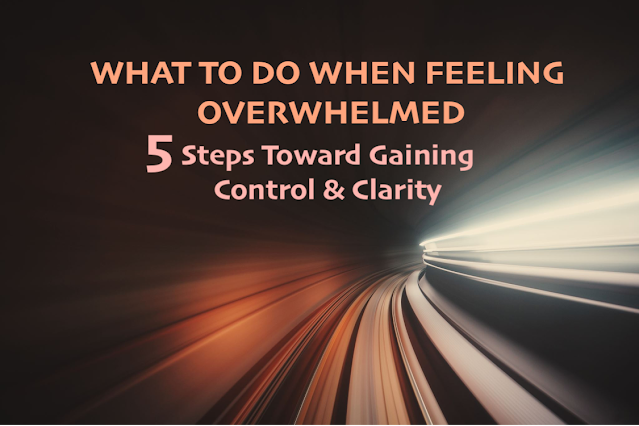RELEASING YOURSELF FROM SOCIAL ANXIETY DISORDER: So That It No Longer Defines or Confines You
Mental health professionals are observing and reporting a meteoric rise in rates of anxiety disorders (both in children and adults). Anxiety disorders have a deep biological underpinning and can be described as chronic intermittent disorders. Interference in day-to-day functioning is an important criterion in the diagnosis of an anxiety disorder. In this article, I will be discussing Social Anxiety Disorder (SAD), a type of anxiety disorder that is also known as social phobia. Before specifically addressing SAD, it is important to keep mindful of:
A regulated nervous system is key to long-term anxiety management; regardless of the nature of the stressor.
Self-Care plays an important role in supporting treatment.
SOCIAL ANXIETY DISORDER CHARACTERISTICS & DIAGNOSIS
Social Anxiety Disorder (SAD) is characterized by an intense fear of and avoidance of social situations and a negative self-perception. Individuals with SAD are extremely self-conscious and they fear being negatively judged by others or becoming embarrassed. Feelings of inadequacy and low self-esteem are part of the clinical picture. The intensity of the fear can be so overwhelming that it interferes with one's daily activities, relationships and overall quality of life. Meeting new people, speaking in public, or even arranging to meet friends and colleagues for dinner or drinks can create an internal cascade and release of stress hormones, signaling panic. Diagnosis of SAD requires a period of 6 months or more of demonstrating the characteristics stated above.
Often misunderstood by friends, colleagues and family members who do not experience social anxiety and have little understanding as to how something that should be fun or, at least, not at all anxiety provoking, such as a birthday celebration gathering, can create such internal havoc and dysregulation in the individual with SAD.
Often well-intentioned but largely misinformed, their response will be to minimize or downplay the reaction, offering simple suggestions to help the person get over the fear. Unfortunately, the minimization and downplaying of the distress and apprehension only serve to heighten feelings of inadequacy and shame.
PHYSICAL SYMPTOMS OF SAD
The anxiety can trigger physical symptoms such as, but certainly not limited to:
- rapid heart rate
- sweating
- trembling or shaking
- difficulty speaking
- freezing
MANAGING SOCIAL ANXIETY
Your best first step (for you or your child who has SAD) is to schedule an appointment with a mental health provider whose specialties include the assessment and treatment of anxiety and anxiety related disorders.
Cognitive-behavioral therapy (CBT) is typically the gold-standard. It is one of the subcategories of talk-therapy. Your treating therapist will in all likelihood recommend exposure therapy (which we will discuss in the next section), and may recommend trauma based therapy (in addition to talk therapy or instead of), a support group and/or a medication consultation with a psychiatrist to determine if medication may be suitable for your (or your child's situation). Antidepressants, particularly selective serotonin reuptake inhibitors (SSRIs), may be helpful.
Children with SAD can also benefit from CBT but, depending on age, their therapy may be Play Therapy; a form of therapy specialized for young children.
The physical practice of yoga can be viewed as a moving meditation, connecting breath with movement. Pranayama is the formal practice of managing the breath, and a steady, rhythmic breath is central to yoga. Its consistent practice yields compounding results, meaning each and every time you participate in this moving meditation, you're decreasing the negative effects of stress. The Ujjayi (or ocean) breath is the most common form of breath control used in yoga. It can help bring calmness to your mind and body.
Here is a basic guide to accessing this breath:
- Get into a comfortable seated position.
- Breathe in through your nose and exhale through your mouth. Imagine you are fogging a mirror with your breath.
- When breathing, inhale to contract the diaphragm to create space for your lungs to expand, and when you exhale, relax the diaphragm and gently push the air from your lungs.
- Inhale and exhale to a slow count of 4.
MINDFULNESS & MEDITATION
The enigmatic practice of meditation, rooted in deep cultural and religious history as a pathway toward enlightenment, has found itself in modern times more commonly used to manage stress and induce relaxation. Meditation is a mental training involving quieting and slowing down the mind. Mindfulness describes a specific manner of living that is cultivated through this system.
Meditation allows you to slow down; to go inwardly, accessing deeper insights. In contrast to a time-out, it’s more of a time-in. The combination of mindfulness and meditation is a powerful antidote to stress and anxiety! Incorporating a daily practice will go along way in helping to re-regulate your nervous system. When your nervous system is regulated, spikes in anxiety significantly decrease. This will be your best ally in social situations.
There are many different types of meditation, mostly falling under the categories of guided and unguided (or silent). The relaxation component of meditation, in its many forms, provides long-lasting health benefits to the mind and body, including increasing volume in brain regions, reducing anxiety and depression, and improving immune function.
While there is not a universally accepted or "best" method, there are components to meditation that are consistent across practices. They include: focused attention, breath awareness, quiet and comfortable setting, and an attitude of non-judgment or "observer." The "best" meditation is the one that is "best" for you and the one that you will consistently do. As you move away from the distracting and critical inner-dialogue to a state of mind of non-judgment and acceptance, you will help reduce the more debilitating aspects of SAD, which is the negative and ruminative self-talk.
A quiet place and a comfortable seat are all you need to begin this practice.
- Sit or lie comfortably.
- Focus your attention on your breath and on how your body moves with each inhalation and exhalation.
- Breathe naturally.
- Notice when your mind and thoughts wander and bring your attention back to your breath.
- Add Aromatherapy. Aromatherapy is the use of essential oils or other aromatic plant compounds for healing and wellness. Certain fragrances have been shown to have a clinically quantifiable effect on mood. Incorporating aromatherapy into your meditation practice may help facilitate feelings of calm and relaxation through its primary processing pathway, the olfactory system.The olfactory bulb (an essential structure of the olfactory system) is directly connected to the amygdala and hippocampus. For purposes of relaxation, lavender is typically the aromatherapy expert's go-to scent.
EMOTIONAL SUPPORT DOG
Be kind and patient with yourself. You did not ask for this condition. And the mission here is not to transform you into a social butterfly. Your goal is to be you and bring the best you in your engagement with others and your world. If anxiety is part of the equation, then with acceptance, allow it to be. However, you will not want it to dominate your essence or your life. It can tag along and quietly hang out. Many have lived highly productive and joyful lives knowing they are managing their levels of anxiety. Or, you may find that its effects on your life have become so imperceptible that it no longer requires any effort on your part to manage it. Either way, it no longer defines or confines you. Success has been achieved!
Practice self-compassion and self-care and remind yourself that with time, effort and support, you can overcome SAD. Acknowledge and celebrate each success in your forward movement. Before you know it, you will be finding yourself more peacefully engaging with others and reaping the rich benefits of social connections.
The information presented in this blog is intended for general knowledge and is not a substitute for medical advice or treatment. As with most things in life, there isn't a magic pill or "cure-all" but there are strategies to help regain control of your life.
REFERENCEs
American Psychiatric Association. (2013). Diagnostic and statistical manual of mental disorders (5th ed.). https://doi.org/10.1176/appi.books.9780890425596
Anxiety and Depression Association of America. (2022, October 28). Anxiety Disorders - Facts and Statistics. https://adaa.org/understanding-anxiety/facts-statistics
Boston University. "Yoga May Elevate Brain GABA Levels, Suggesting Possible Treatment For Depression." ScienceDaily, 22 May 2007
Morrison, A. S., Mateen, M. A., Brozovich, F. A., Zaki, J., Goldin, P. R., Heimberg, R. G., et al. (2019). Changes in empathy mediate the effects of cognitive-behavioral group therapy but not mindfulness-based stress reduction for social anxiety disorder. Behav. Ther. 50, 1098–1111. doi: 10.1016/j.beth.2019.05.005
Radtke, S. R., Strege, M. V., and Ollendick, T. H. (2020). “Exposure therapy for children and adolescents with social anxiety disorder,” in Exposure Therapy for Children with Anxiety and OCD, eds T. S. Peris, E. A. Storch, and J. F. McGuire (Amsterdam: Elsevier), 193–219.
Rapee, R. M., and Spence, S. H. (2004). The etiology of social phobia: empirical evidence and an initial model. Clin. Psychol. Rev. 24, 737–767.
If you enjoyed this article and would like to read more, then let's connect:
FACEBOOK: Marie Therese Rogers
Dr. Rogers
Life in Focus
LINKEDIN: Marie T. Rogers, Ph.D.
TikTok: drmarierogers
YOU ARE ALSO INVITED TO LISTEN TO THE LIFE IN FOCUS PODCAST ON APPLE AND OTHER STREAMING DEVICES.



















https://youtu.be/DODoSl4KS8I?si=TLKI6jMZGZF4HUgv
ReplyDelete